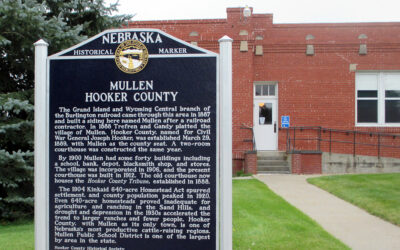In one decade, the South Omaha stockyards went from a single farm to a major meat center. The 1880s were a time of explosive growth for South Omaha, yet surprisingly few photographs document its expansion. In the Winter 2013 issue of Nebraska History, historian John Carter presents a photographic essay of photos that do remain, showing the birth of a huge industry.
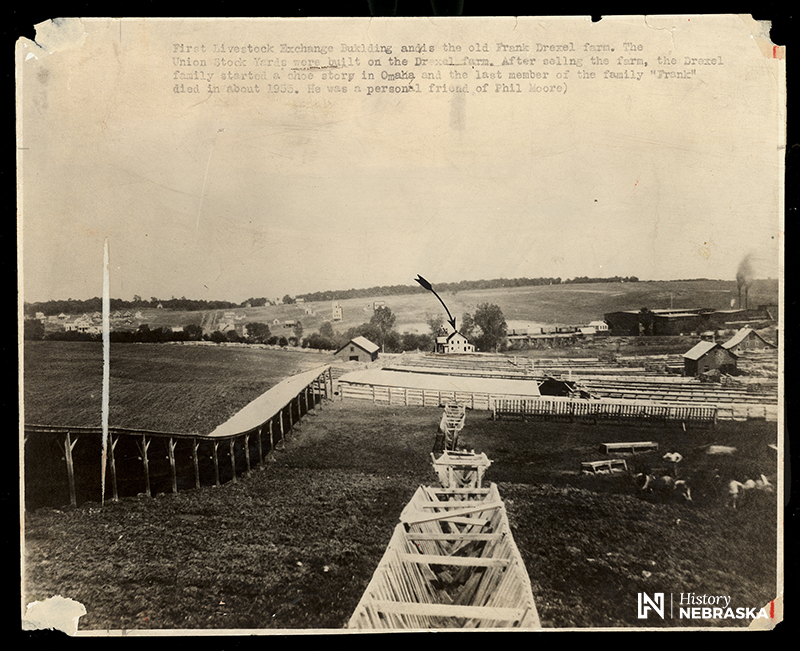
By John E. Carter
By 1870 the cattle industry in western Nebraska was booming. Thousands of head of Texas cattle came either to meet the railroad for transportation to Chicago markets or to be driven further north to meet the demands of military posts and Indian reservation.
During this decade large ranches grazed cattle on huge tracts of government land. The high quality grasses produced high quality beef, and demand for this Nebraska product grew. By 1880 ranchers clamored for a stockyard in Omaha. They were tired of their animals losing weight by traveling the extra five hundred miles from Omaha to Chicago. Lost weight meant lost profits.
In 1883 Wyoming rancher Alexander Swan came to Omaha to encourage local entrepreneurs to establish a stockyard. The location was perfect. Omaha was surrounded by plenty of grass and corn, and the Missouri River provided both ample water and a swift moving stream to haul waste away—a stark contrast to the slow-moving Chicago River that regularly backed up with rank sewage, creating an immense health hazard.
Swan assembled a group of investors and acquired land in what would become South Omaha. What began with a single farm exploded into a huge enterprise. By the end of the decade South Omaha was established as a major meat center, and by 1956 Omaha was the largest meat producing city in the world.
For something this big very few pictures survive of its birth. Here are a few that do survive.
It is hard to imagine the speed of the stockyard’s progress. It began with the Frank Drexel farm (top photo). The farm encompassed ten acres of land; the farmhouse, marked with the arrow, served as the first exchange building.
Things moved at a breakneck pace. In 1886 developers erected the elegant Stockyard Exchange Building. Between 1885 and 1887 four major meat packers—G. H. Hammond (1885), Fowler Brothers (1886), Armour-Cudahy and Swift (both 1887)—established major plants adjacent to the stockyards.
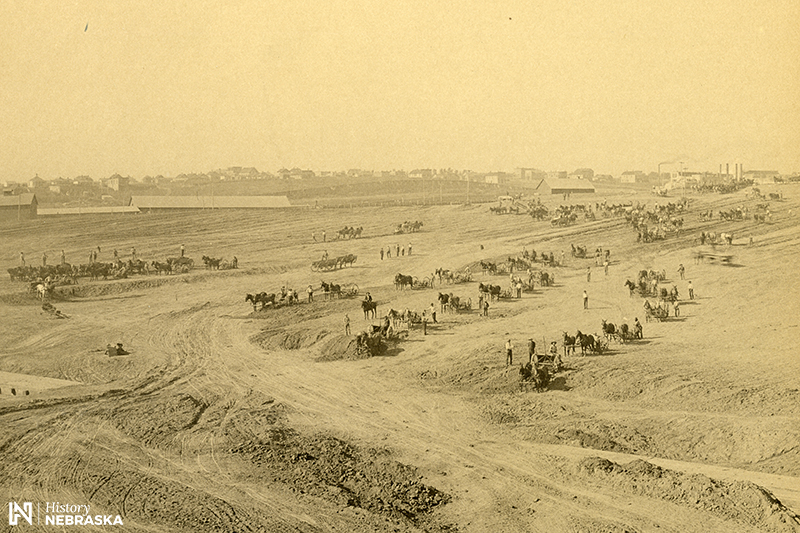
In this photo, one gets a good sense of the frenzy of building from the photograph of construction crews grading the land in what would become the large pen areas. On the horizon on the right of the image one sees the array of newly-built houses and stores, the birthing of the City of South Omaha. To the left, the smokestacks and substantial industrial buildings locate the packing houses.
The crews are using horse-drawn bucket scrapers to bury an immense eight-foot-square wooden sewer. One of the advantages of Omaha was its proximity to the Missouri, and a structure like this would be necessary to deal with the waste produced by the huge volume of livestock to come.
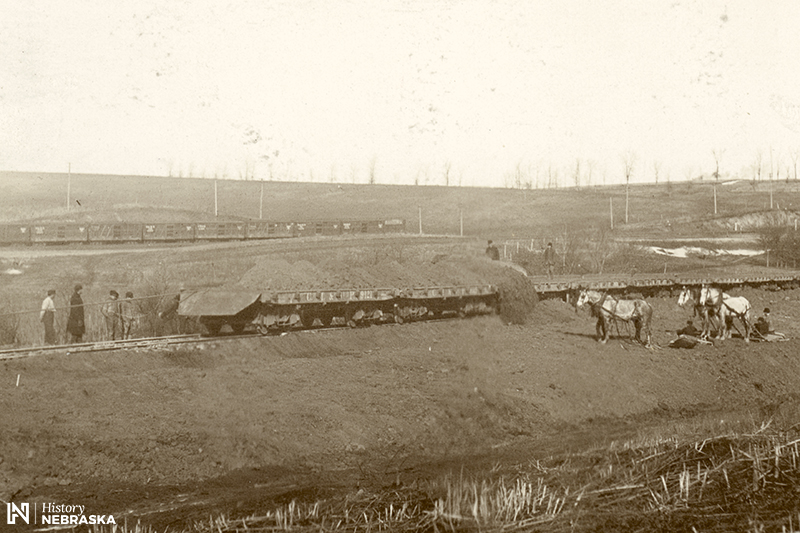
The railroads were key to the success of the stockyards, and both the Burlington and Union Pacific developed lines into South Omaha. In this photo we see flatcars loaded with dirt being delivered for grade development. There were no sophisticated side-deliver dump cars, but here we see a clever solution to the same problem.
The cars are lined up and loaded with soil. On the last car, a blade has been positioned that is attached to a thick rope that runs under the dirt and across all of the cars. When the cars are in position the rope is pulled, no doubt by a locomotive, which draws the blade forward neatly scraping the cars of their loads.
South Omaha has long been known as a place of muscle and sweat; it was born of the same stuff—all of this was going on in a five-year stretch. It is no surprise at all that South Omaha became the hub of an exploding Nebraska meat industry.
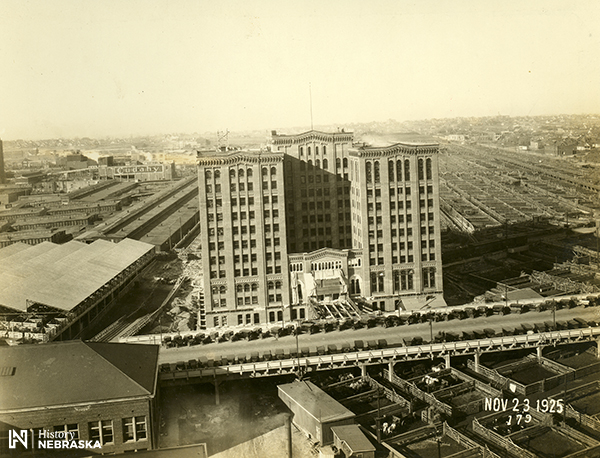
This article is adapted from a piece that historian John Carter (1950-2015) wrote for Nebraska History magazine in 2013. The complete article is available as a free PDF. The version above first appeared in the November 2019 issue of NEBRASKAland magazine.
Photo credits:
1. The Frank Drexel Farm, ca. 1888. History Nebraska RG1085-24-11
2. Grading the land ca. 1887. History Nebraska RG1085-77-1
3. Moving dirt with a flatcar. History Nebraska RG1085-7-6
4. The stockyards in 1925. The Livestock Exchange Building completed that year still stands. History Nebraska RG1085-7-15

